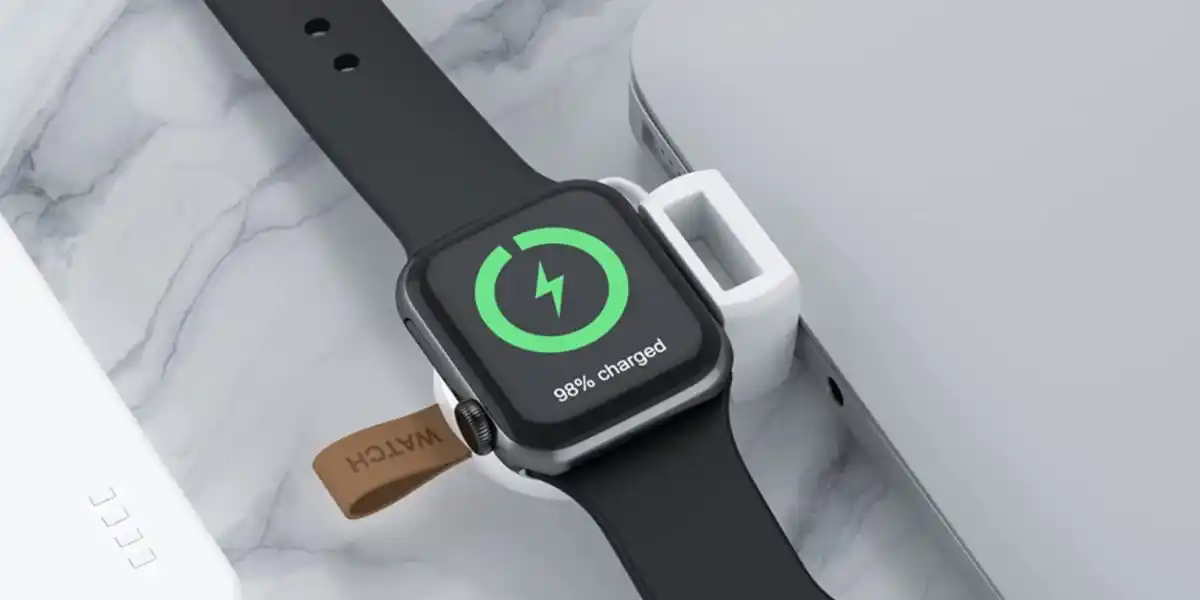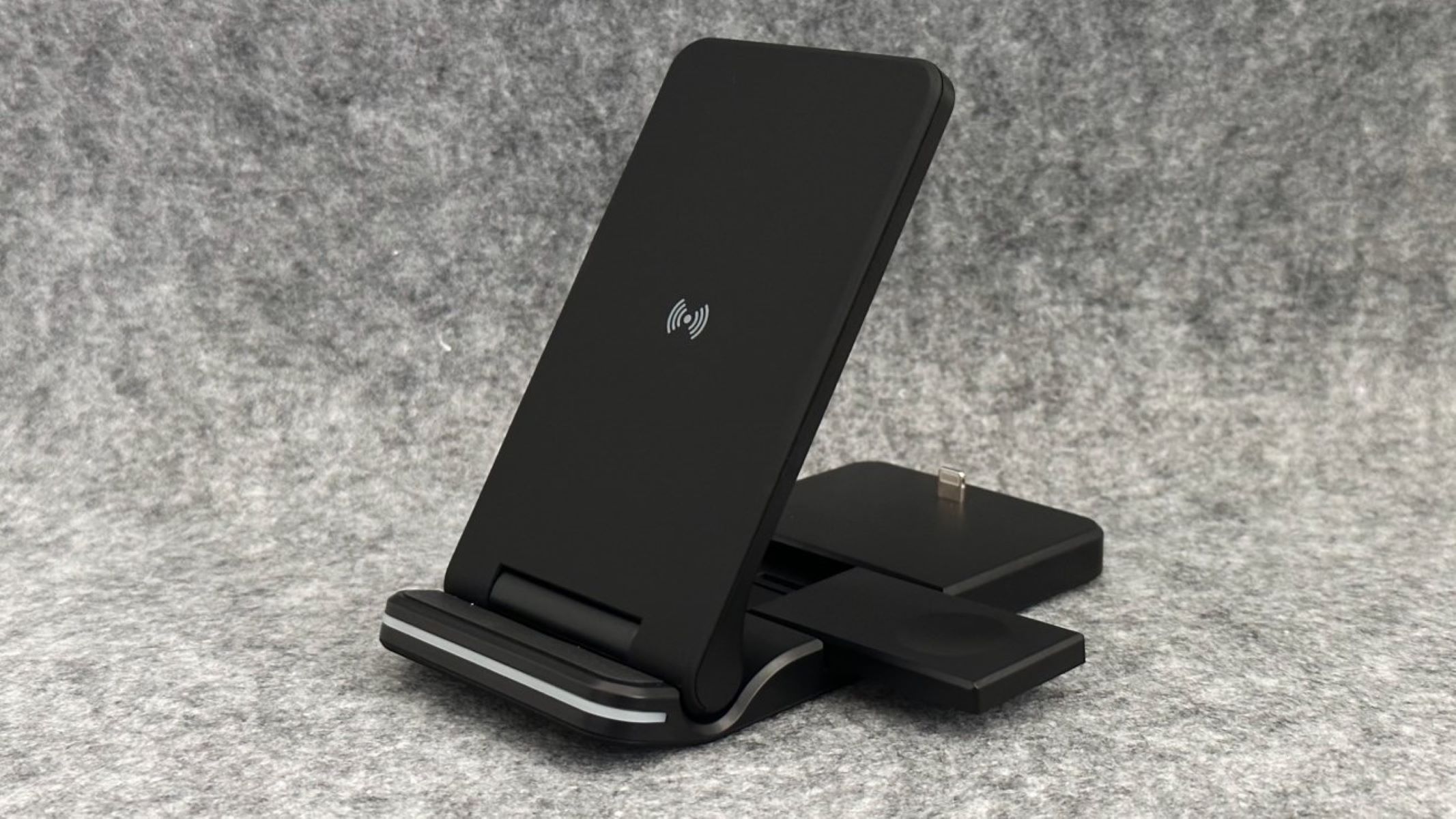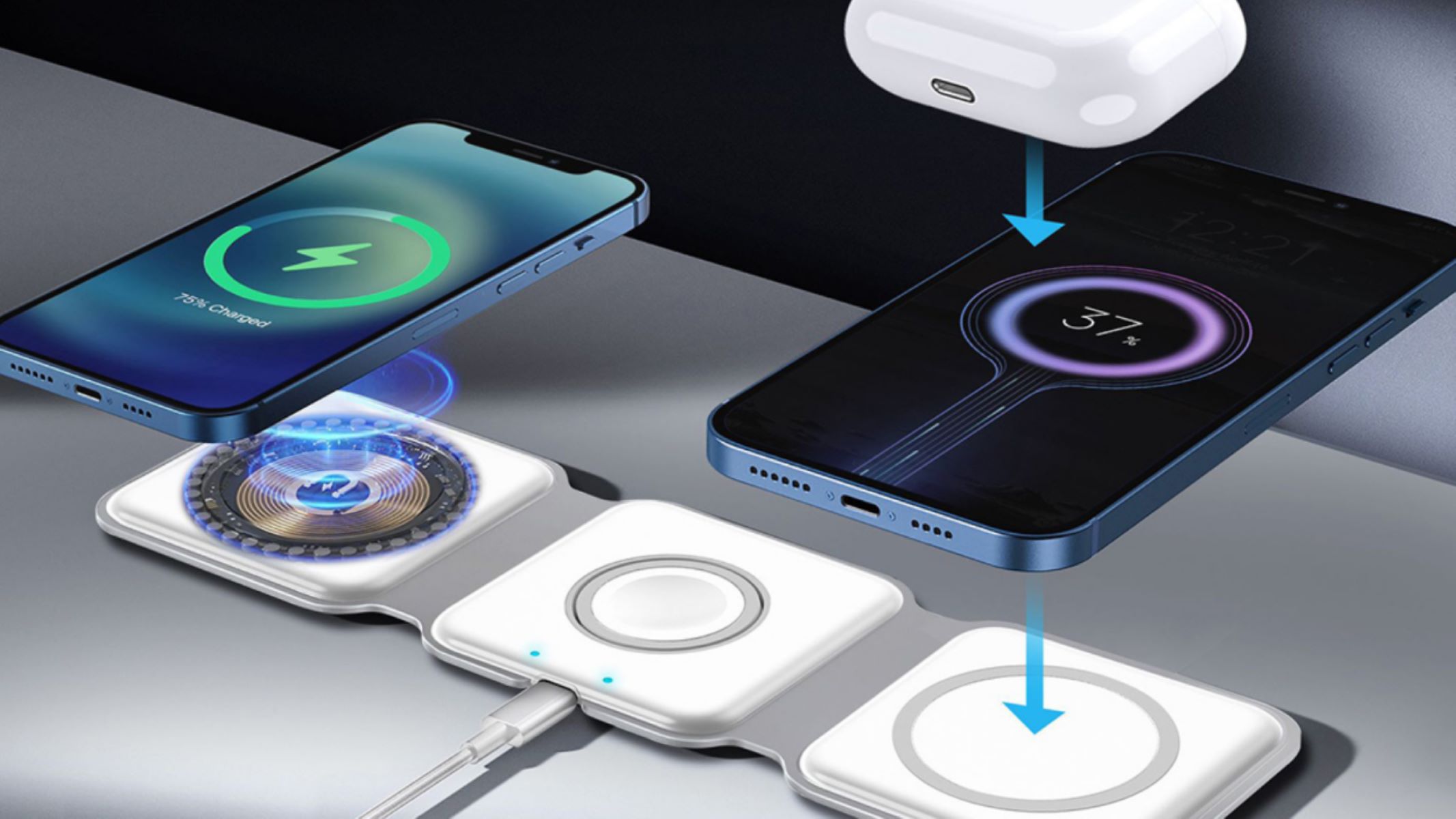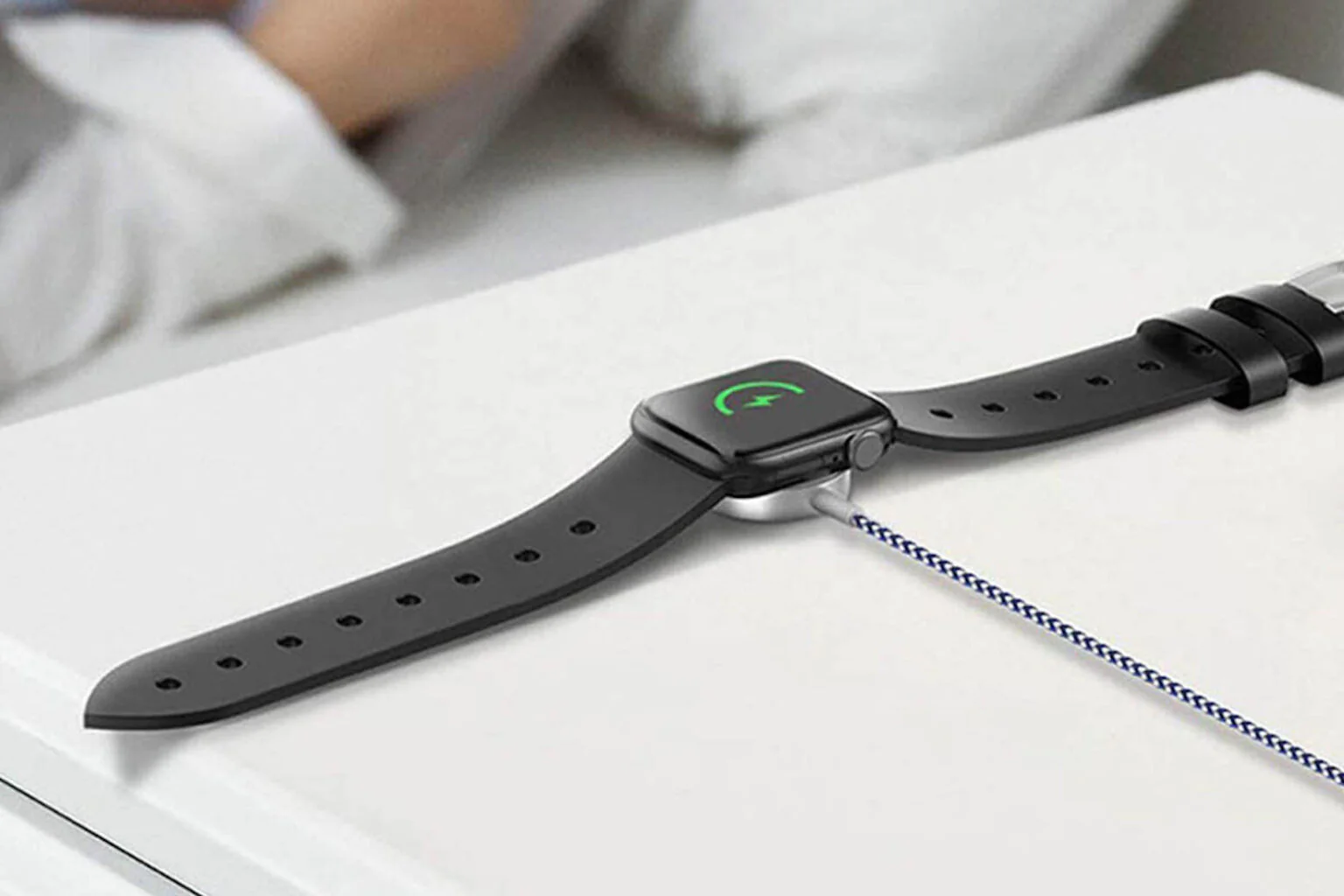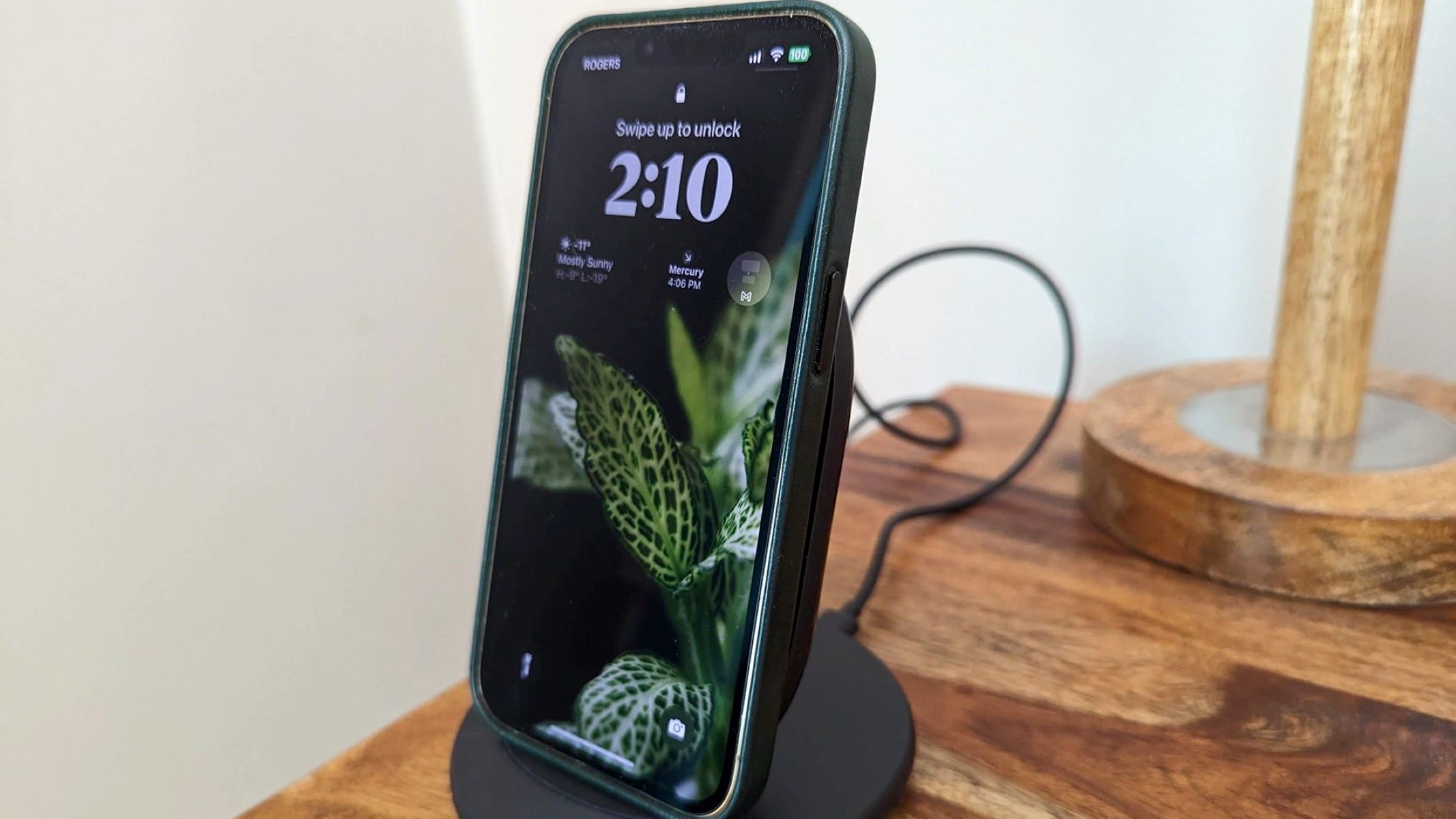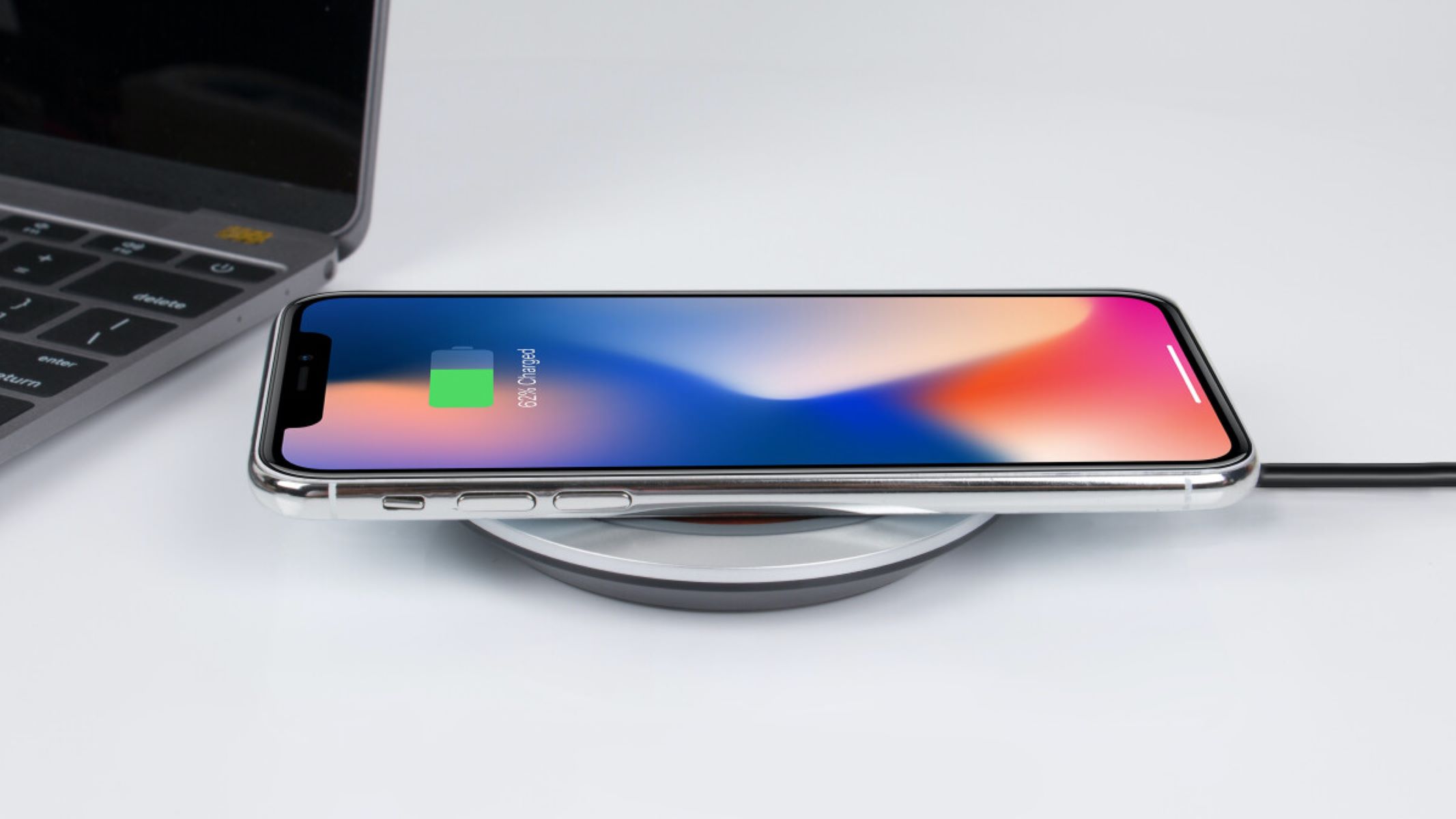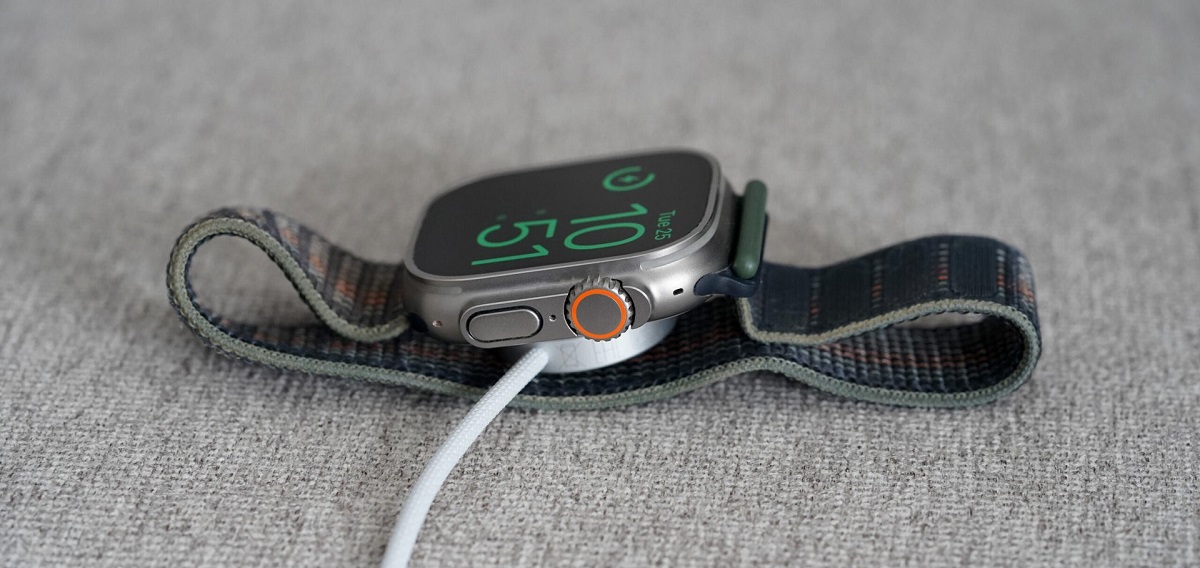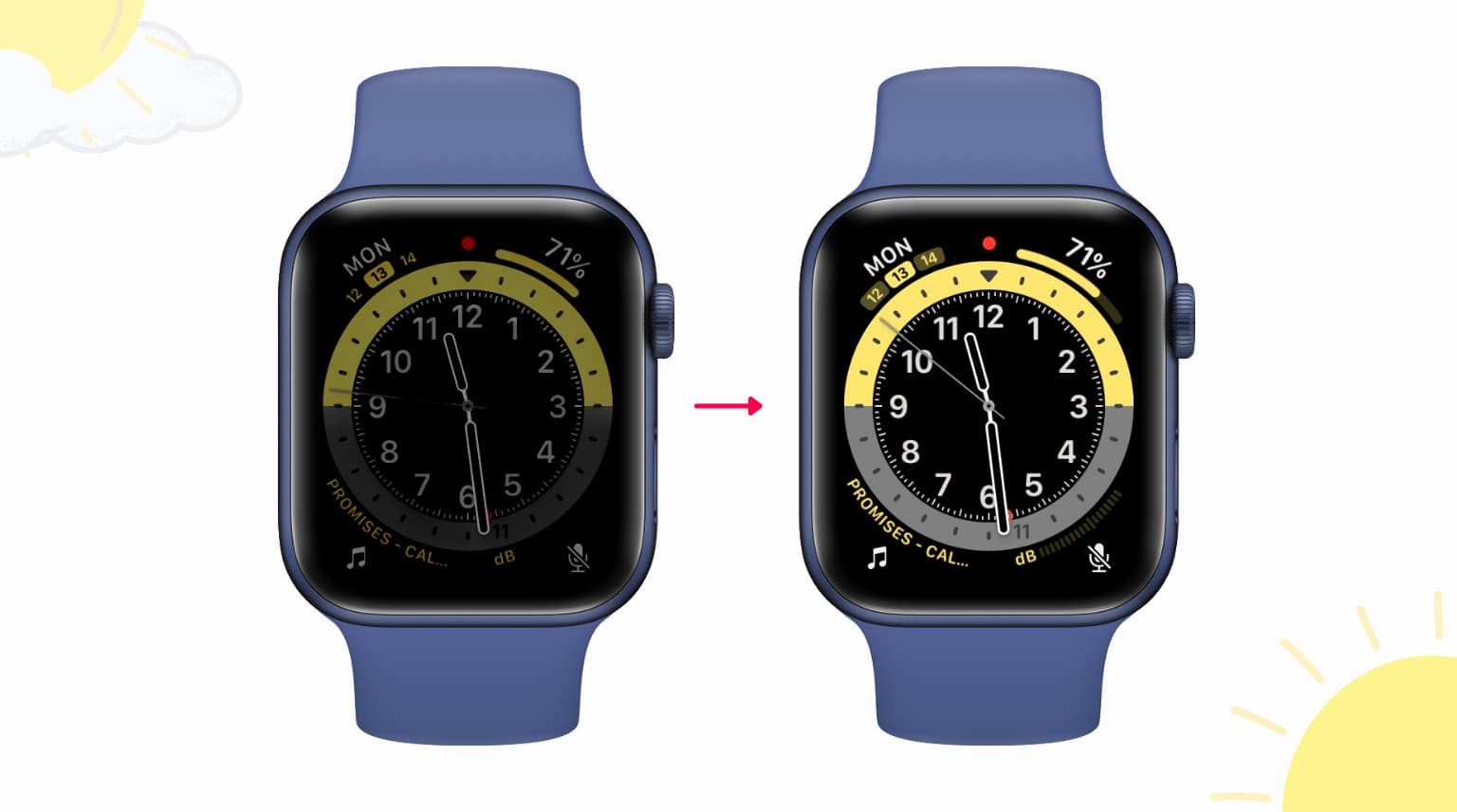Common Causes of Apple Watch Getting Hot When Charging
Are you experiencing the issue of your Apple Watch getting hot when charging? While it’s normal for electronic devices to generate some heat during the charging process, excessive heat can indicate an underlying issue. Understanding the common causes of an Apple Watch getting hot while charging can help you identify the problem and take appropriate measures to prevent it from happening again.
1. Charging Pad Alignment: One possible cause of your Apple Watch overheating during charging is improper alignment on the charging pad. Ensure that the watch is properly centered on the charging pad to ensure a stable connection and efficient power transfer.
2. Charger Compatibility: Using a charger that is not specifically designed for the Apple Watch can lead to overheating issues. Make sure you are using the official Apple Watch charger or a certified third-party charger that meets the required specifications.
3. Software Updates: Outdated or faulty software can sometimes cause your Apple Watch to heat up during charging. Check for any available software updates for your watch and install them. These updates often include bug fixes and optimizations that can resolve overheating issues.
4. Background Apps: Running multiple apps in the background while your Apple Watch is charging can cause it to generate more heat. Close any unnecessary apps to reduce the workload on your watch and alleviate overheating.
5. Heavy Usage while Charging: If you continue to use your Apple Watch extensively while it is charging, it can generate excessive heat. To prevent this, avoid using power-intensive apps, playing games, or running other processor-intensive tasks during the charging process.
6. Temperature and Environment: Extreme temperature conditions, both hot and cold, can impact the charging process and cause your Apple Watch to overheat. Avoid charging your watch in direct sunlight or in extremely hot or cold environments.
7. Hardware Issues: In some cases, hardware issues can be the root cause of your Apple Watch getting hot while charging. These issues can range from a faulty battery to a damaged charging port. If you have ruled out all the other possible causes, it may be time to contact Apple Support or take your watch to an authorized service center for further investigation.
By being aware of these common causes, you can take the necessary steps to prevent your Apple Watch from overheating while charging. In the next section, we will discuss some tips to cool down an overheated Apple Watch during the charging process.
How to Prevent Apple Watch from Overheating While Charging
Excessive heat during the charging process can not only be uncomfortable but also affect the performance and lifespan of your Apple Watch. To prevent your Apple Watch from overheating while charging, follow these tips:
1. Proper Charging Pad Placement: Ensure that you place your Apple Watch on the charging pad or dock correctly, making sure it is centered and aligned. This will ensure a stable connection and proper power transfer, reducing the risk of overheating.
2. Use an Official or Certified Charger: Always use the official Apple Watch charger or a certified third-party charger that meets the required specifications. Using incompatible or low-quality chargers can lead to excessive heat generation and potential damage to your watch.
3. Avoid Charging in Direct Sunlight: Charging your Apple Watch in direct sunlight or in a hot environment can intensify the heat generation. Place your watch in a cool, well-ventilated area away from direct sunlight or any other heat sources.
4. Minimize Usage During Charging: While it may be tempting to use your Apple Watch while it’s charging, it’s best to minimize usage during this time. Using power-intensive apps or constantly interacting with the watch can lead to increased heat generation. Allow your watch to charge uninterrupted to prevent overheating.
5. Close Background Apps: Before you start charging your Apple Watch, close any unnecessary apps running in the background. Running multiple apps can put additional strain on the watch’s processor, causing it to generate more heat. Closing these apps reduces the workload and helps in maintaining a cooler temperature.
6. Avoid Extreme Temperatures: Extreme temperatures, both hot and cold, can affect the charging process and contribute to overheating. Avoid charging your watch in extreme temperature conditions. If your watch feels very hot or cold to the touch, allow it to cool or warm up to room temperature before charging.
7. Regularly Update Software: Software updates often include bug fixes and performance improvements that can address overheating issues. Ensure that your Apple Watch is running the latest available software by regularly checking for updates in the Watch app on your paired iPhone.
By following these preventive measures, you can reduce the risk of your Apple Watch overheating during the charging process. In the next section, we will discuss some tips to cool down an overheated Apple Watch while it’s charging.
Tips to Cool Down an Overheated Apple Watch During Charging
While charging, your Apple Watch may occasionally become overheated. If you notice your watch getting too hot, here are some tips to help cool it down:
1. Remove the Watch from the Charging Pad: If your Apple Watch is excessively hot, immediately remove it from the charging pad or dock. Allow it to cool down in a well-ventilated area before resuming the charging process.
2. Disable Power-Intensive Features: To reduce heat generation, disable power-intensive features such as the Always-On Display, raise to wake, or the heart rate monitor, while your watch is charging. These features can put additional strain on the watch’s resources and contribute to overheating.
3. Adjust Charging Environment: If your Apple Watch is overheating, try adjusting the charging environment. Move it to a cooler area, away from direct sunlight or any heat sources that may be causing the excessive heat. Placing it on a cool, non-metallic surface can also help dissipate heat more effectively.
4. Remove the Watch Band: Consider removing the watch band while charging if you notice severe overheating. The watch band can sometimes interfere with heat dissipation, trapping heat against your wrist. Removing the band can allow for better airflow and cooling.
5. Restart the Apple Watch: Occasionally, a software glitch can cause the Apple Watch to overheat during charging. Try restarting your watch by holding down the side button until the power-off slider appears. Slide to power it off, and then press and hold the side button again to turn it back on. This can help resolve any temporary issues causing the overheating.
6. Allow Sufficient Time to Cool Down: If your Apple Watch becomes very hot, it may take some time for it to cool down to a safe temperature. Avoid attempting to recharge it immediately to prevent further overheating. Once the watch has cooled down, you can resume the charging process.
7. Check for Hardware Issues: If you frequently encounter overheating issues with your Apple Watch during charging, it may indicate a hardware problem. Inspect the charging cable, port, and the back of the watch for any damage or debris that may be obstructing proper heat dissipation. If you suspect a hardware issue, contact Apple Support or visit an authorized service center for assistance.
By following these tips, you can effectively cool down an overheated Apple Watch during the charging process. Remember, it’s important to maintain a safe operating temperature to ensure the longevity and performance of your device. In the next section, we will provide troubleshooting steps to fix an Apple Watch that gets hot when charging.
Troubleshooting Steps to Fix an Apple Watch that Gets Hot When Charging
If your Apple Watch consistently gets hot when charging, there are several troubleshooting steps you can take to address the issue:
1. Restart the Apple Watch: Often, a simple restart can resolve temporary software glitches that may be causing overheating. Press and hold the side button until the power-off slider appears, slide it to power off, and then press and hold the side button again to turn it back on.
2. Update Apple Watch Software: Ensure that your Apple Watch is running the latest software version. Go to the Watch app on your iPhone, navigate to General > Software Update, and install any available updates. Software updates often include bug fixes and optimizations that can address overheating issues.
3. Reset All Settings: If the overheating problem persists, you can try resetting all settings on your Apple Watch. This will not erase any data, but it will revert all system settings to their default configurations. Go to the Watch app on your iPhone, navigate to General > Reset, and select “Reset All Settings”.
4. Check Charging Cable and Port: Inspect the charging cable for any signs of damage or frayed wires. Also, closely examine the charging port on your Apple Watch for debris or dirt that may be obstructing proper charging and heat dissipation. Clean the port gently using a soft, lint-free cloth or a brush designed for electronics.
5. Remove Third-Party Accessories: Remove any third-party accessories, such as protective cases or screen protectors, that may be interfering with the charging process and causing excessive heat generation. Sometimes, these accessories can impede the proper transfer of power and lead to overheating.
6. Factory Reset: If all else fails, you can try performing a factory reset on your Apple Watch. Keep in mind that this will erase all data and settings on the watch, so make sure to create a backup first. Go to the Watch app on your iPhone, navigate to General > Reset and select “Erase Apple Watch Content and Settings.
7. Contact Apple Support: If none of the troubleshooting steps mentioned above resolves the issue and your Apple Watch continues to overheat during charging, it is advisable to contact Apple Support or visit an authorized service center for further assistance. They will be able to diagnose any potential hardware problems and provide appropriate solutions.
By following these troubleshooting steps, you can effectively address the issue of an Apple Watch getting hot when charging. However, if the problem persists, it’s best to seek professional support to ensure the optimal functionality and safety of your device.
Is it Normal for an Apple Watch to Get Hot While Charging?
It is normal for an Apple Watch to generate some heat during the charging process. Like any electronic device, the Apple Watch converts electrical energy into other forms, such as heat. However, excessive or prolonged heat can be a cause for concern.
During charging, the battery inside the Apple Watch goes through a chemical process to store power. This process naturally generates heat as a byproduct. Additionally, the charging process involves transferring electrical energy from the charging cable to the battery, which can cause heat to be generated.
While a warm or slightly hot sensation is common, if your Apple Watch becomes uncomfortably hot to the touch or if you notice significant heating without any apparent reason, it may indicate an issue that requires attention. Excessive heat can affect the performance and lifespan of the device and may be a sign of an underlying problem.
If your Apple Watch consistently gets excessively hot or if you notice any abnormal behavior or warnings on the screen related to overheating, it is advisable to take the necessary steps to prevent further damage and consult with Apple Support or visit an authorized service center.
It’s important to note that several factors can affect the amount of heat generated during charging, including environmental conditions, charging habits, and the usage of power-intensive features. Following best practices, such as using an official or certified charger, properly aligning the watch on the charging pad, and avoiding extreme temperatures, can help mitigate excessive heating.
It’s also worth mentioning that software updates released by Apple periodically include optimizations and bug fixes that can address overheating issues. Regularly updating your Apple Watch to the latest software version can help maintain optimal performance and temperature regulation during charging.
In summary, while it is normal for an Apple Watch to get warm during charging, it should not become excessively hot. If you experience abnormal heating or have concerns about your Apple Watch’s temperature while charging, it is recommended to seek assistance from Apple Support or an authorized service center to ensure the safety and functionality of your device.
Apple Watch Charging Safety Guidelines
Proper charging practices are essential to ensure the safety and longevity of your Apple Watch. Following these charging safety guidelines can help prevent overheating and potential hazards during the charging process:
1. Use Official or Certified Chargers: Always use the official Apple Watch charger or a certified third-party charger that meets the required specifications. Using unauthorized or low-quality chargers can not only lead to overheating but also pose a risk of electrical shorts or fires.
2. Avoid Charging in Extreme Temperatures: Charging your Apple Watch in extreme temperature conditions, whether it is extremely hot or cold, can impact the charging process and potentially damage the device. Ideally, charge your watch in a cool, well-ventilated area away from direct sunlight or heat sources.
3. Ensure Proper Charging Pad Alignment: When placing your Apple Watch on the charging pad or dock, ensure proper alignment to avoid any connection issues and ensure efficient charging. The watch should be centered on the charging pad with the charging pins making a secure contact.
4. Remove Excessive Protective Accessories: If you use protective cases or screen protectors that interfere with the charging process, remove them while charging. These accessories may impede proper power transfer and lead to overheating or slow charging.
5. Avoid Charging Overnight or Unattended: While it may be tempting to leave your Apple Watch charging overnight or for extended periods, it is recommended to avoid doing so. Continuous charging can generate heat and potentially lead to overheating or damage the battery over time.
6. Keep Charging Area Clear: Ensure the area around the charging pad or dock is clear of any objects that could obstruct proper airflow and dissipate heat. Avoid placing flammable materials or liquids near the charging area to prevent potential accidents.
7. Regularly Inspect Charging Cable and Port: Routinely check the charging cable and port for any signs of damage, wear, or dirt. Frayed cables or debris in the charging port can hinder proper charging and contribute to overheating. If you notice any issues, replace the cable or clean the port using a soft, lint-free cloth or brush.
By following these safety guidelines, you can help ensure a safe and efficient charging experience for your Apple Watch. Proper care during the charging process will not only prevent overheating but also contribute to the long-term performance and reliability of your device.
Alternate Charging Methods for Apple Watch to Avoid Overheating
If you frequently experience overheating issues while charging your Apple Watch using the traditional charging method, there are alternative charging methods you can consider. These methods can help minimize heat generation and provide a cooler charging experience:
1. Charge with a USB Power Adapter: Instead of connecting your Apple Watch directly to a power source using the traditional charging cable and pad, you can charge it using a USB power adapter. Simply detach the charging cable from the pad and connect it to a USB power adapter, then plug the adapter into a power outlet. This can help prevent any potential heat buildup associated with the charging pad.
2. Wireless Charging: If your Apple Watch supports wireless charging, you can opt for this method to minimize heat generation. Wireless charging eliminates the need for physical connection between the watch and the charger, reducing the risk of heat transfer through the charging cable. Place your Apple Watch on a compatible wireless charging pad or dock to charge it wirelessly.
3. Portable Power Banks: Using a portable power bank to charge your Apple Watch can provide a convenient and potentially cooler charging option. Look for a power bank that supports Apple Watch charging and has the necessary charging cable. Utilizing a power bank allows you to charge your watch on-the-go without the need for a power outlet, minimizing overheating concerns associated with the charging process.
4. AirPower Mat (if available): If you have an AirPower mat, it provides a seamless charging experience for your compatible Apple devices, including the Apple Watch. This mat allows you to charge multiple devices simultaneously without the need for individual charging pads. With AirPower, heat generation is spread out more evenly and can help prevent localized overheating in one specific area of the charging pad.
5. Monitor Charging Time: Regardless of the charging method you choose, it is important to monitor the charging time. Extended periods of charging can generate heat and potentially lead to overheating. Remove your Apple Watch from the charger once it reaches a sufficient charge level to prevent unnecessary heat buildup.
It’s worth noting that while these alternate charging methods may help minimize overheating, it’s essential to use high-quality and certified accessories that meet Apple’s standards. Using unauthorized or low-quality chargers and power banks can still pose safety risks and compromise the performance of your Apple Watch.
By utilizing these alternate charging methods and following proper charging practices, you can reduce the risk of overheating your Apple Watch and ensure a cooler and more efficient charging experience.
When to Seek Technical Support for an Apple Watch that Gets Hot While Charging
If you consistently experience overheating issues with your Apple Watch while charging, it may be necessary to seek technical support. While some heat generation during charging is normal, excessively hot temperatures or persistent overheating can indicate underlying problems that require attention. Here are some indications of when to seek technical support:
1. Consistently Excessive Heat: If your Apple Watch consistently becomes uncomfortably hot to the touch while charging, it is a clear indication that something may be wrong. Such high temperatures can affect the overall performance and lifespan of the device. Seek technical support to diagnose and troubleshoot the issue.
2. Frequent Overheating Warnings: If your Apple Watch repeatedly displays overheating warnings or shuts down due to overheating during the charging process, it is crucial to address the issue promptly. These warnings are designed to protect the device from potential damage or hazards and should not be ignored.
3. Failure to Charge Properly: If your Apple Watch struggles to charge or experiences intermittent charging issues accompanied by noticeable heat generation, it may be a sign of a hardware problem. Seek technical support to investigate and resolve any potential charging-related issues.
4. Unusually Long Charging Times: If your Apple Watch takes significantly longer to charge than usual and becomes excessively hot during the prolonged charging process, it indicates an issue that requires attention. This can be especially problematic if the extended charging time does not correspond to a low battery level.
5. Persistent Battery Drain: If you notice a significant increase in battery drain while charging your Apple Watch, it may suggest a deeper underlying problem. Excessive heat generation during charging can contribute to accelerated battery drain. Seek technical support to diagnose and resolve the issue.
If you encounter any of these scenarios, it is advisable to contact Apple Support or visit an authorized service center for further assistance. They have the expertise and resources to diagnose hardware or software problems affecting your Apple Watch’s charging performance and address them accordingly.
Remember to provide relevant information pertaining to the issue, such as the model of your Apple Watch, charging habits, and any specific error messages or symptoms you have noticed. This will help the support team evaluate the issue more effectively and provide you with appropriate solutions.
By seeking technical support when necessary, you can ensure the optimal functionality and safety of your Apple Watch, and address any potential issues of overheating during charging.







